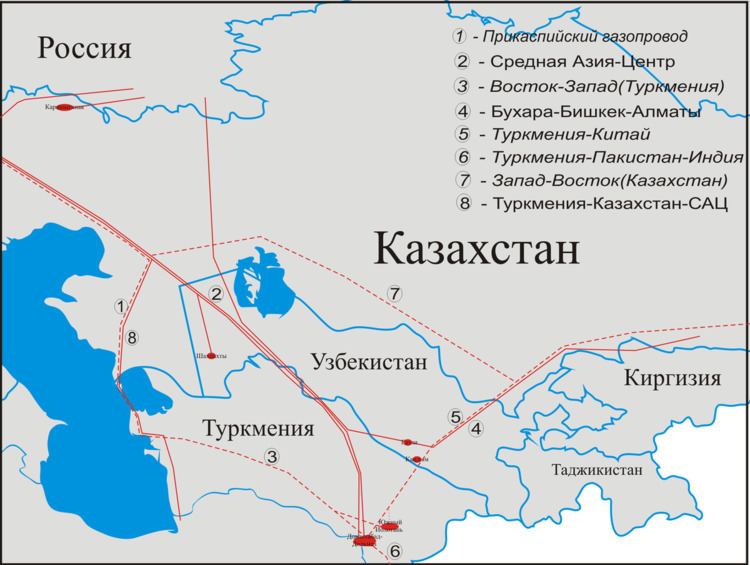General direction west–east Type natural gas | Commissioned 1971 | |
 | ||
Maximum discharge 22 billion cubic meters Operators Uzbekneftegaz, JSC KazTransGaz | ||
The Bukhara–Tashkent–Bishkek–Almaty pipeline is a Uzbekistan's main natural gas export pipeline.
Contents
History
Construction of the pipeline started in 1967. In 1968, the pipeline reached to Tashkent, in 1970 to Bishkek (then Frunze) and in 1971 to Almaty.
Description
The diameter of the pipeline is 1,020 millimetres (40 in) and the annual capacity of the pipeline is almost 22 billion cubic meter (bcm) of natural gas. The Bukhara–Tashkent–Bishkek–Almaty pipeline is the main source of gas supply for Kyrgyzstan and southern part of Kazakhstan. It is possible that the pipeline will be connected with the planned Central Asia-China gas pipeline.
Operators
The Kazakhstan section of pipeline is operated by KazTransGas, a wholly owned subsidiary of KazMunayGas. The Kyrgyzstan section of pipe line is operated by KyrKazGas, the joint venture of KazTransGas and Kyrgyzgas.
Future developments
The technical condition of the pipeline is alarming, particularly in Kyrgyzstan. Therefore, there are plans for construction of a second trunk gas pipeline and renovation of the existing pipeline.
